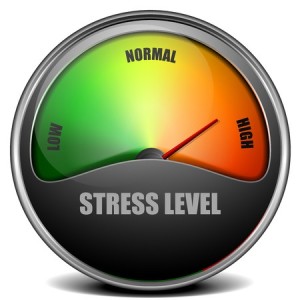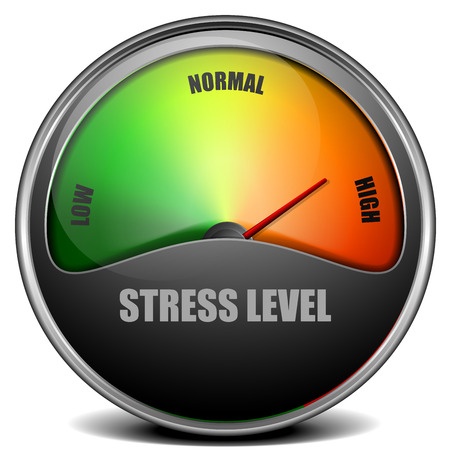
For addicts and alcoholics their drug of choice is often THE method of stress management. Having a difficult time with a rebellious teenager? Drink. Got in a car accident in the midst of a stressful week? Get high. Fired after telling off a demanding boss? Drink. Sometimes the stressor can be as minor as working long hours. Situations like these are commonly heard in recovery. All of the stressors leading to active drinking or drug use described here have happened in real life. Could it be that addicts and alcoholics are more sensitive to stress?
Researchers Mary Jeanne Kreek and George Koob have been systematically collecting evidence on the role of stress in drug abuse and relapse for a number of years. In a research paper published in 1998, Drs. Kreek and Koob noted that a variety of imaging techniques have demonstrated that chronic drug abuse causes alterations in specific aspects of brain function that are persistent over time, and in some cases, may be permanent. These abnormalities could contribute to adverse symptoms that are ultimately relieved by further drug use. In behavioral modification terms, this is known as the process of negative reinforcement—a behavior (drug use) is strengthened by removing or stopping an aversive stimulus (stress).
Initially drug use is motivated by the user’s high, but continued use leads to tolerance—adaptation to the presence of the drug. So another source of reinforcement, “the negative reinforcement associated with relieving negative affective and physical consequences of drug termination” becomes part of the cycle of drug use and addiction. The stress of living life on life’s terms could be magnified by brain abnormalities that result from a person’s increased difficulty coping with stressful situations.
Kreek and Koob have demonstrated in their research that the nervous system of an addict is hypersensitive to chemically induced stress. Steven Stocker, writing for NIDA, the National Institute on Drug Abuse, said Kreek’s research has suggested this hypersensitivity could exist before any initial drug use; or it could result from the effects of chronic drug use of the brain; or it could be due to a combination of both factors.
Stocker described how the stress hormone cycle of the body works. Initially, the body reacts to stress by secreting hormones into the blood and neurotransmitters in the brain. Some of the neurotransmitters seem to be either similar to the hormones, but acting in a different capacity in the brain. As the hormones travel through the body, they alter the metabolism of food so that the brain and muscles have enough metabolic fuel for potential activities such as fight of flight in response to the perceived source of stress. Within the brain, “the neurotransmitters trigger emotions, such as aggression or anxiety, that prompt the person to undertake those activities.”
Normally, stress hormones are released in small amounts throughout the day. But when the body is under stress, the level of these hormones increases dramatically. This process begins with the release of a hormone called corticotropin-releasing factor (CRF) by a part of the brain called the hypothalamus into the blood. CRF travels to the pituitary gland and stimulates the release of another hormone called adrenocorticotropin (ACTH). Then ACTH in turn triggers the release of cortisol and other hormones from the adrenal glands.
Cortisol travels throughout the body, helping it to cope with stress. If the stressor is mild, when the cortisol reaches the brain and pituitary gland it inhibits the further release of CRF and ACTH, which return to their normal levels. But if the stressor is intense, signals in the brain for more CRF release outweigh the inhibitory signal from cortisol, and the stress hormone cycle continues.
You can see a graphic depiction of this stress hormone cycle in the NIDA note written by Stocker. The stress hormone cycle is controlled by a number of other chemicals in addition to CRF and ACTH, among which are neurotransmitters called opioid peptides. These opioid peptides are chemically similar to drugs like heroin and morphine. “Dr. Kreek has found evidence that opioid peptides also may inhibit the release of CRF and other stress-related neurotransmitters in the brain, thereby inhibiting stressful emotions.”
It appears that heroin and morphine will inhibit the stress hormone cycle and thus the release of stress-related neurotransmitters just as the natural opioid peptides do. So when someone uses heroin or morphine (I’d think this could be applied to all or most natural or synthetic opioids), the drugs increase the inhibition of the stress cycle already being provided by the opioid peptides and help with the regulation of an emotional response to stress. Dr. Kreek suggested that individual addicts and alcoholics having difficulty coping with stressful emotions could find that using their drug of choice helps to blunt those emotions, which “could be a major factor in their continued use of these drugs.”
As the effects of opioid drugs wear off, the addict goes into withdrawal. During withdrawal, the level of stress hormones rises in the blood, and stress-related neurotransmitters are released into the brain. Unpleasant emotions are triggered by these chemicals, driving the addict to take more opiates. The short half-life for most opioids (like heroin) lasts only 4 to 6 hours. So opiate addicts can cycle through withdrawal three or four times a day. The constant switching of the stress systems of the body off and on heightens the stress sensitivity of the person. “The result is that these stress chemicals are on a sort of hair-trigger release. They surge at the slightest provocation.”
It seems a similar process could explain what happens to addicts who resume active drug use after a period of extended abstinence. If chronic drug abuse leads to long term or permanent dysregulation of the stress hormone cycle, then stressful periods of life have the potential to trigger dysregulation of the cycle and possibly lead to a resumption of drug use as a way to manage the stress.
I know someone who has said they feel the most “normal” in life when they are high. Chronic dysfunction and stress in their life seems to have repeatedly led them back to active drug use even after periods of extended abstinence. They’ve noticed that when they are happy (times of low stress), they feels the closest to “normal” without the influence of drugs.
In a 2007 review article, Koob and Kreek said relapse to drug addiction days, months, or years after the last use of a drug may be due in part to subtle factors that result from long-term changes or abnormalities in the brain after long-term exposure to a drug of abuse. “These changes may contribute to a general, ill-defined feeling of dysphoria, anxiety, or abnormality and also could be considered a form of protracted abstinence.” Genetic factors and early environmental factors could also contribute to some individuals being more vulnerable to acquiring drug addiction and relapse to drug use after achieving abstinence.
This increased vulnerability to stress, whether it is temporary or permanent, does not make a person “constitutionally incapable” of establishing and maintaining abstinence. But it does point to a serious relapse trigger and relapse warning sign that many addicts and alcoholics will have to actively monitor and manage—their stress levels. An excellent place to get help in managing stress if you are a recovering addict or alcoholic is a blog by Terence Gorski: “Using Stress Management in Relapse Prevention.” “Managing Stress in Recovery” will describe my musings on Gorski’s model of stress management when I post the article here sometime in the next couple of weeks.





